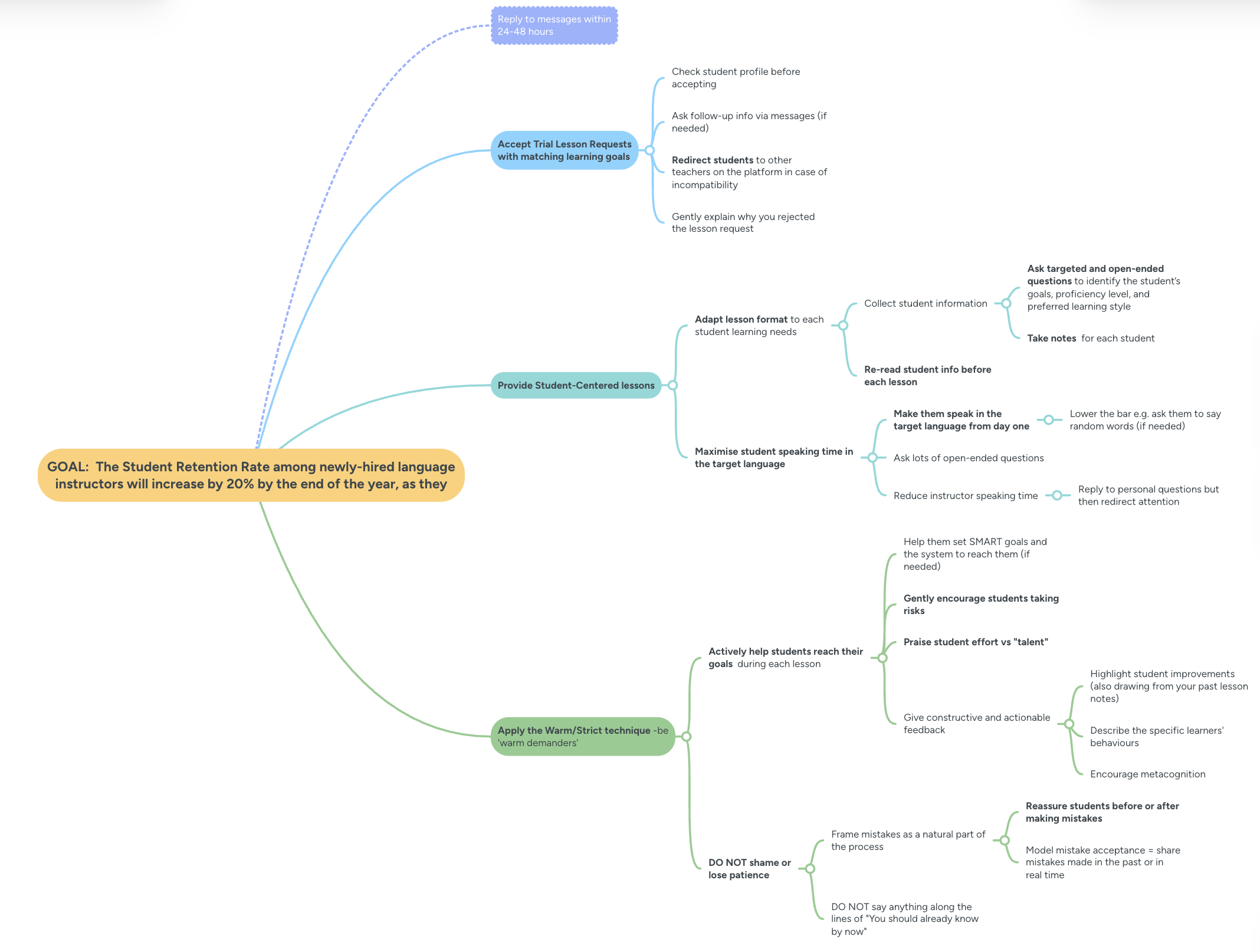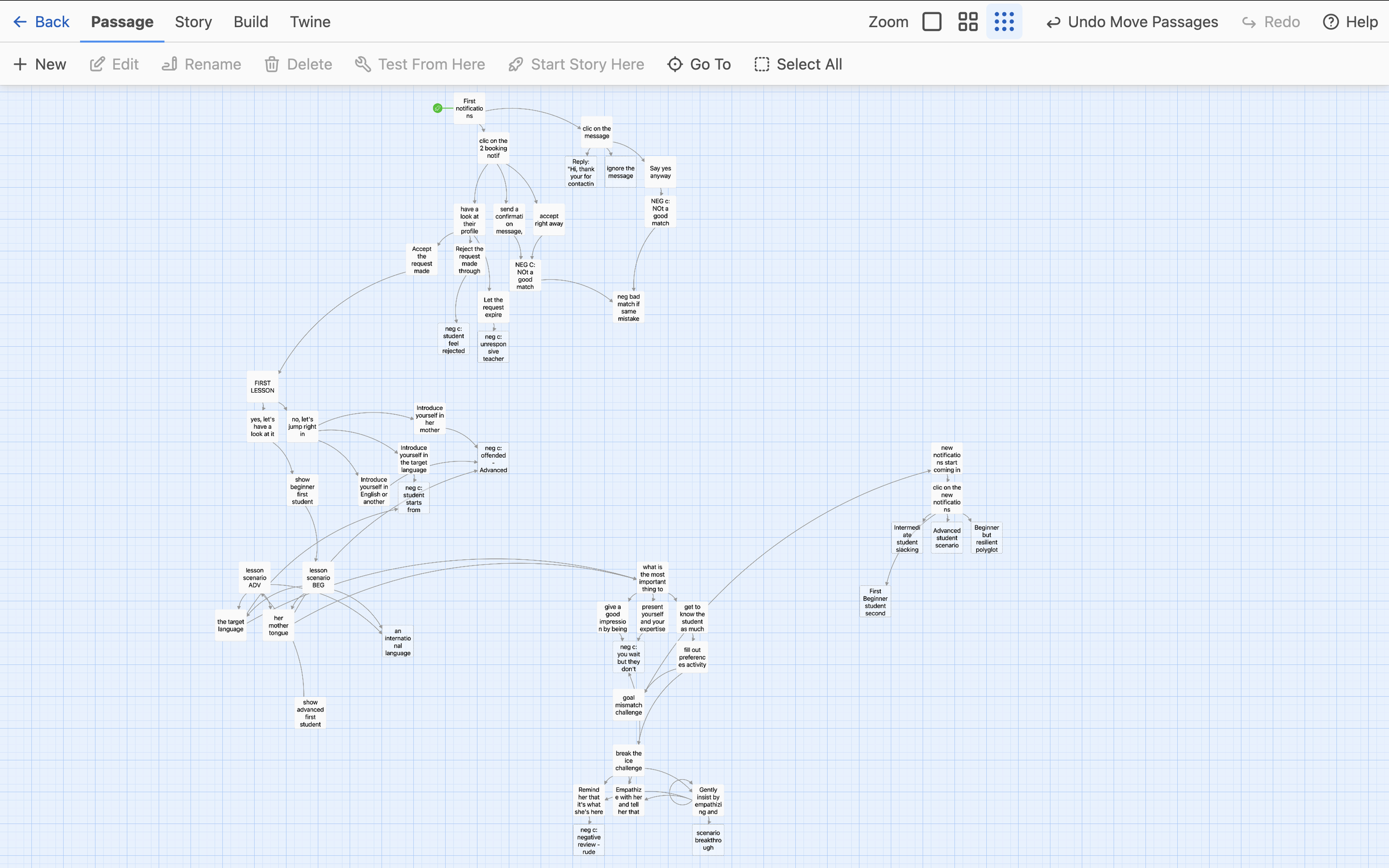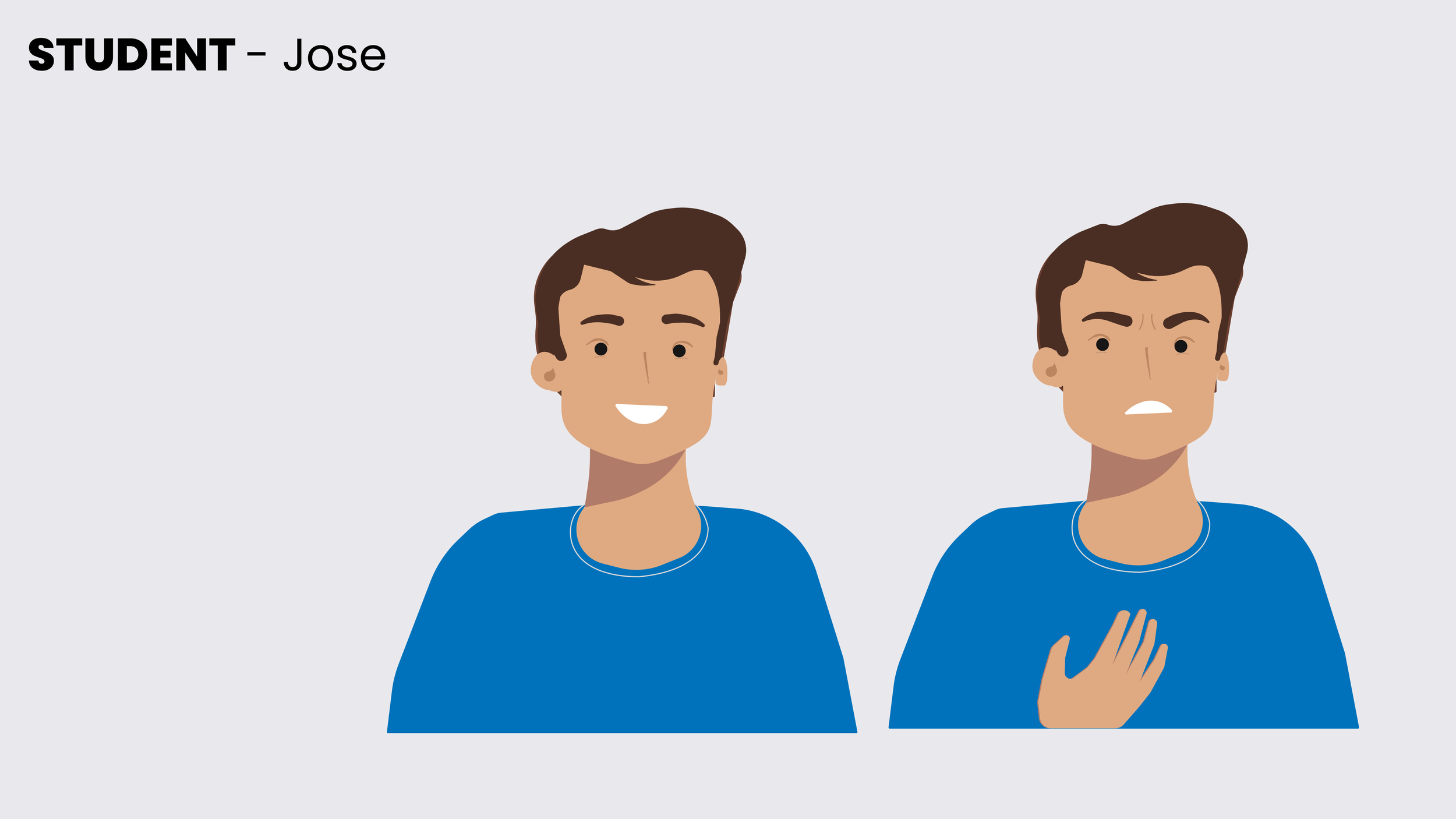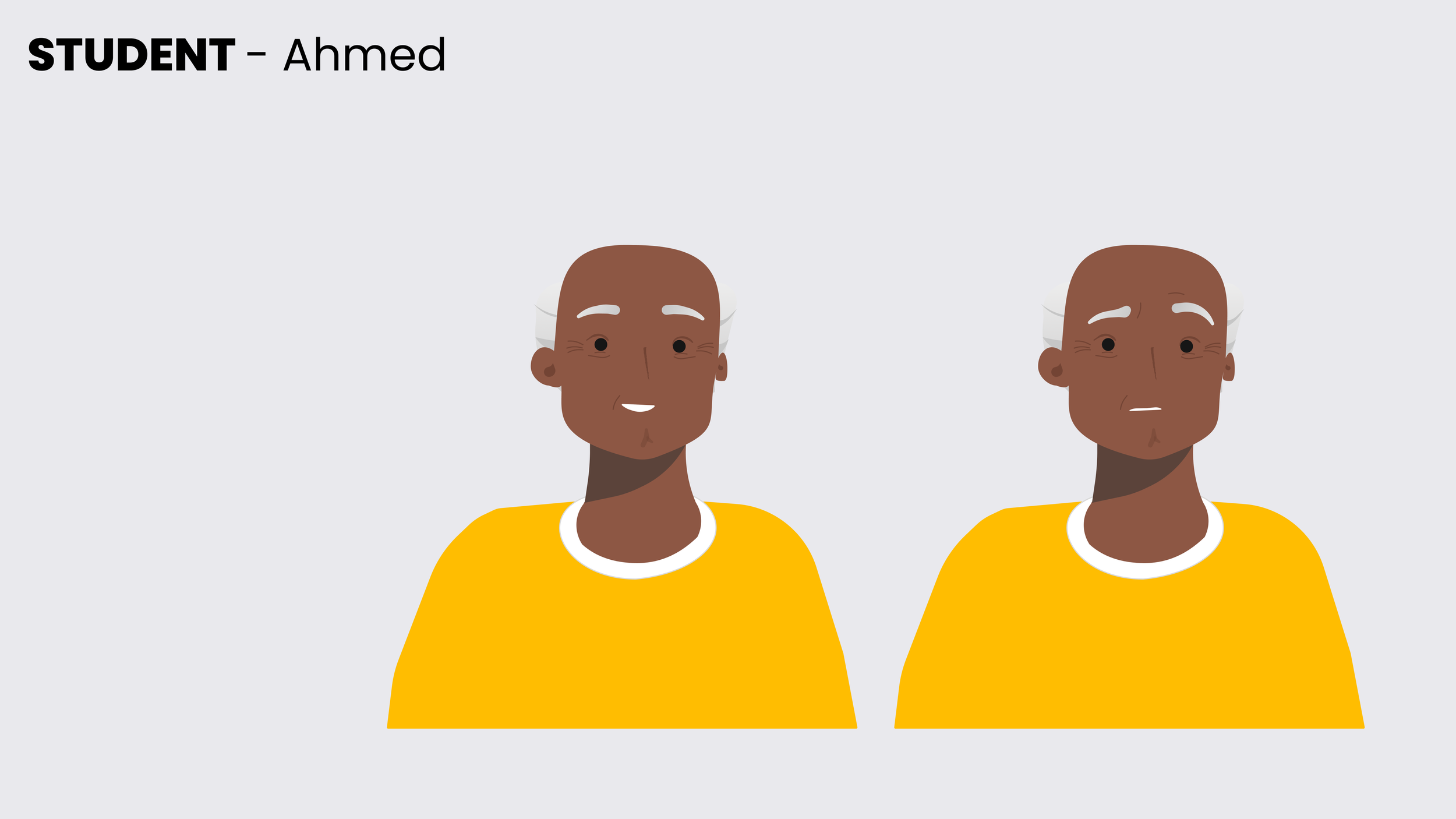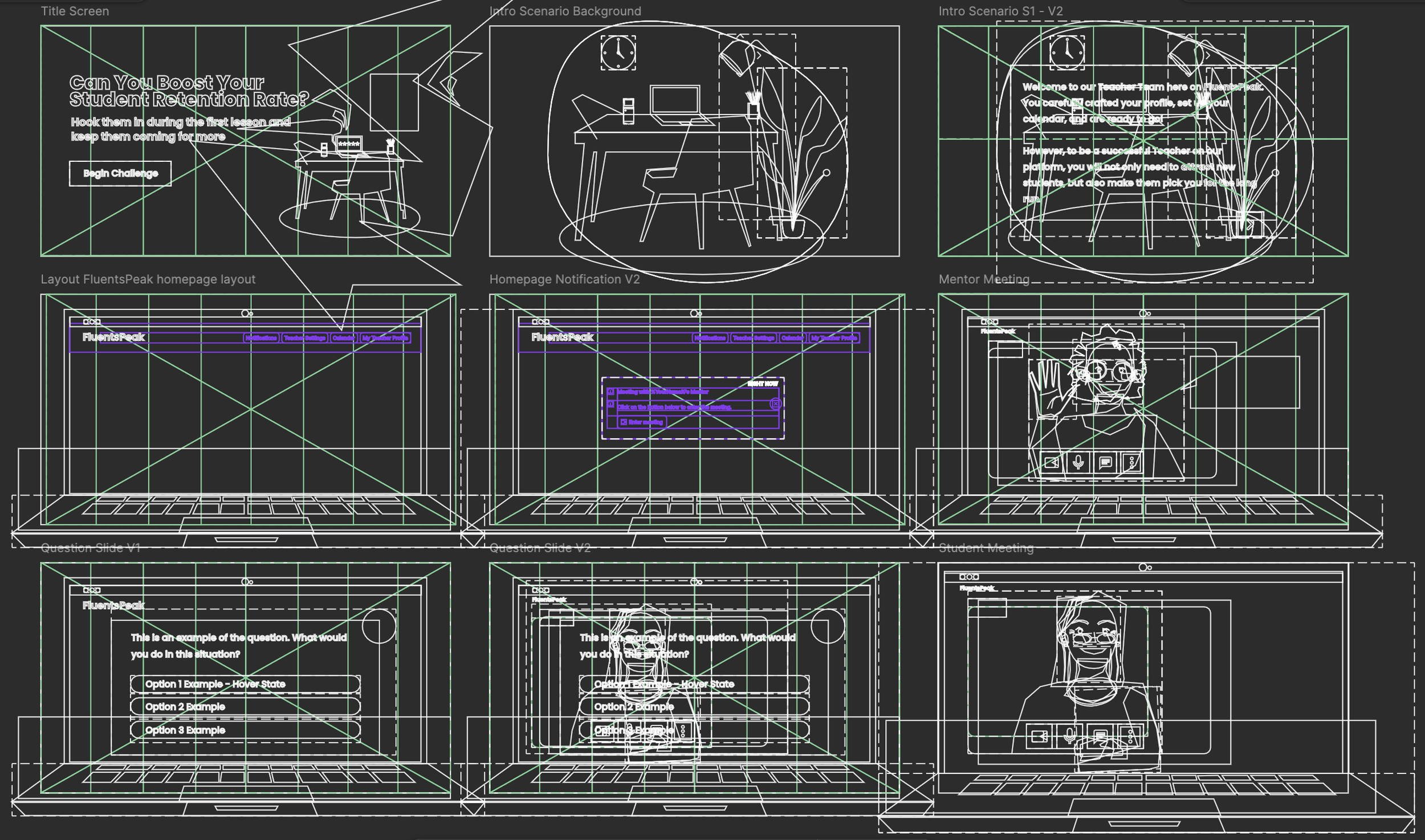Boosting Learner Retention on an E-Learning Language Platform
SCENARIO-BASED E-LEARNING EXPERIENCEExperience an engaging, scenario-based e-learning project designed to equip newly-hired online language instructors with the skills they need to build and maintain a successful long-term learner network on the platform.
Target audience
Newly-hired language instructors on a 1-on-1 e-learning platform.
Responsabilities
Instructional design, Graphic Design, Action Mapping, Storyboarding, Prototyping, E-Learning Development, Monitoring and Evaluation, AI Audio Generation.
Used Tools
Articulate Storyline 360, Figma, MindMeister, Google Workspace, Pages, Twine.
The Problem
FluentsPeak — a fictitious client — is a language learning platform that provides 1-on-1 language lessons. The company noticed some educators were struggling to turn first-time learners into regulars.
After analysing the issue and leveraging my own experience as a language educator, teacher trainer, and language learner, I confirmed a significant skill gap among language instructors in navigating student relationships within the platform context.
This skill gap resulted in learning losses, reduced customer satisfaction, and lower learner retention rates —ultimately impacting the business.
The Solution
To address the performance problem, I proposed a scenario-based e-learning experience that enables onboarding language instructors worldwide to practice learner retention behaviours in a risk-free environment, helping them integrate best practices and successfully adapt to the platform context.
Compared to traditional training formats—such as modules, workshops, or video content—this immersive, story-driven solution delivers a more engaging and effective learning experience by exposing new hires to realistic on-the-job conflict scenarios and allowing them to learn by experimenting in a controlled environment.
2
Prototype Design
After defining the high-priority actions, I created a text-based storyboard to incorporate them into a coherent narrative, complete with realistic scenarios and consequences. I also designed visual mockups and interactive prototypes to collect iterative feedback.
1
Goal Definition
After analyzing the fictitious client’s pain points, in the dual role of Subject Matter Expert (SME) and Instructional Designer (ID), I supported them in identifying a measurable desired outcome and the high-priority actions needed to address the issues.
The Process
3
Solution Development
Following multiple rounds of refinement and the fictitious client’s approval, I moved on to full development on ArticulateStoryline.
4
Impact Evaluation
Pushing beyond the limits of a concept project, I would evaluate the impact using all four levels of Kirkpatrick’s model to ensure the solution achieves the desired outcome.
STEP 1 - GOAL DEFINITION
Action Mapping
I supported the fictitious client in defining the desired outcome in a measurable and time-bound formula by tying it to the learner retention rate.
Then, in the dual role of Subject Matter Expert (SME) and ID, I listed the series of key behaviours that prevent learner drop-out in this e-learning context.
Through comprehensive research, I compiled the perspectives of language learners and educators to select 4 key actions and specific subactions that language instructors need to integrate to enhance learner retention.
Reply to messages within 24-48h hours
Accept Trial Lesson Requests with matching learning goals
Provide Student-Centered lessons
Apply the Warm/Strict technique
By analysing the reason behind each missing action, I discovered that 3 actions (#2, #3, #4) were related to a knowledge/skill gap I could fill with a learning intervention.
Moreover, to suitably address the educators’ responsiveness (#1), I suggested that FluentsPeak design a companion app.
For the Action Mapping process, I chose MindMeister as a visual support for its accessibility.
STEP 2 - PROTOTYPE DESIGN
Text-Based Storyboard
Once the Action Map was approved, I developed a text-based storyboard featuring real-world scenarios with branching consequences. Each decision point presented the learner with two or three possible actions: one correct response and one or two realistic distractors, respectively.
When learners select an option, they face the positive or negative outcomes they would encounter if they were already on the platform; a correct choice allows the story to progress, while an incorrect one eventually triggers a ‘try again’ option.
To foster autonomous experimentation while still ensuring guidance and on-demand assistance, I introduced a mentor character, Sophia. Learners can seek help before or after making a decision, requesting contextual hints or feedback throughout the experience.
Twine Interactive Storytelling
While working on the Text-Based Storyboard, I also used Twine to visualise the scenarios and their branching consequences in a very early draft form.
Visual Mockups
Designing the Brand
As this was a concept project, I jumped at the opportunity to take on the additional role as Graphic Designer, and I had a blast creating the company’s name and logo from scratch.
I designed the logo and selected the colour scheme to best convey the company’s core message: ‘you can reach Mount Fluency in your target language while having fun on our platform’.
I therefore aimed for a fun yet minimalistic visual style—balancing professionalism with a sense of enjoyment.
STYLE GUIDEI developed a style guide on Figma, opting for a color scheme and fonts that would match the FluentsPeak brand.
Designing the Learning Experience
CHARACTER SETI designed a custom character set from scratch, complete with a range of emotional expressions to show—rather than tell—the consequences. The characters include the previously mentioned mentor and three students.
SLIDE MOCKUPSI created wireframes and high-fidelity mockups to gather early feedback on the visual design before incorporating interactivity.
To give the experience a realistic feel, I designed both the backgrounds and the learner interactions to resemble the FluentSpeak e-learning platform, aiming to maximise the course’s usefulness for onboarding instructors.
The course was specifically designed for laptop use only, as FluentSpeak did not offer a companion mobile app. This decision also informed the visual design.
Interactive Prototype
I used Articulate Storyline 360 to create an interactive prototype that included: the scenario introduction, mentor introduction and the first decision juncture. By deliberately looking for iterative feedback early on, I was able to improve the project before moving to the development phase and avoiding what would have been time-consuming adjustments at later phases.
STEP 3 - DEVELOP
Full-on Development
Once the feedback from the interactive prototype was collected and integrated, I moved on to developing the final product in Articulate Storyline 360.
Features:
Custom Visuals, Mentor-Led Scaffolding in the Learning Journey, Custom Audio Effects with AI generation.
STEP 4 - IMPACT EVALUATION
Impact Monitoring and Evaluation
Pushing beyond the limits of a concept project, I would evaluate the impact using all four levels of Kirkpatrick’s model to ensure the solution achieves the desired outcome.
Kirkpatrick’s Levels:
1: Reaction – I would gather language instructors’ feedback on the content and design through a satisfaction survey, to further improve the course.
2: Learning – I would assess skill acquisition using a pre- and post-course online quiz, integrated into FluentSpeak’s onboarding process.
3: Behaviour – Given the e-learning context, I would evaluate the application of newly acquired skills on the job by distributing post-lesson surveys to learners taught by newly hired instructors.
4: Results – After one year, I would measure the overall impact of the training by monitoring learner retention rates and comparing them to those of a control group.
TAKEAWAYS
Developed a learner-centred onboarding experience tailored for newly-hired language instructors on a 1-on-1 e-learning platform, aiming to enhance learner retention rate and ultimately improve customer satisfaction.
Designed custom characters and interactive elements to foster emotional engagement and visually demonstrate on-the-job consequences, reinforcing learning through simulation.
Created an e-learning experience that mirrored the FluentSpeak platform’s look and feel, enhancing realism and learner familiarity.
Anticipated diverse learner needs by incorporating scaffolded content and adaptive feedback mechanisms to support varying proficiency levels.
Gained valuable experience in integrating graphic design with instructional design, including logo and branding development.
Experimented with custom AI audio generation.
Plan to advance the project through user testing and iterative feedback cycles to further refine the learner experience, enhance accessibility, and apply Kirkpatrick’s four-level evaluation model for comprehensive impact measurement.

